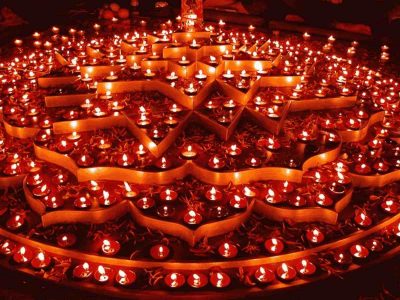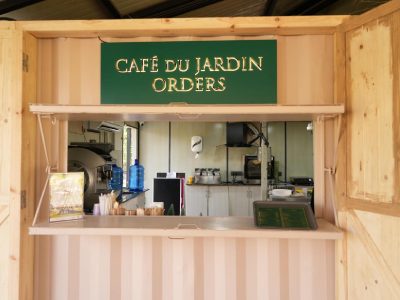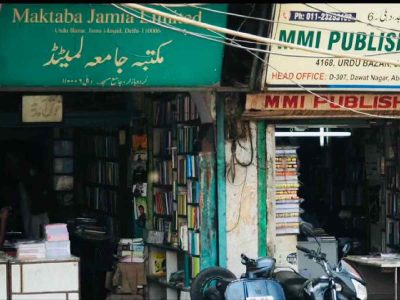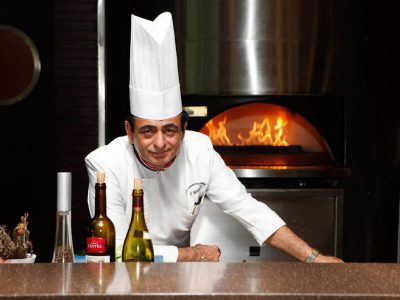There is a huge market for Indian handicrafts like embroidered jholas and hand-made scissors that we never see in local shops but are bringing in valuable foreign exchange
Of all the things that make India special, its handicrafts are a beloved commodity both in the domestic and international markets. Ikea came to India in 2018 but has been sourcing and manufacturing handmade products in India for the last 30 years. This gives us an idea of our production capabilities in the sector and how we have progressed so far.
We see enough locally produced handmade items in markets in and outside of Delhi. However, a visit to an exhibition dedicated to just Indian handicrafts is a fun way to learn about the skillsets that go into making Indian crafts.
Export Promotion Council for Handicrafts’ bi-annual expo mart in Greater Noida is the go-to place for buyers from the world over to source Indian handicrafts for retail markets back in their countries. As a lot of this merchandise does not sell in India, it is a matter of wonder to come across work that gets developed in the country and never sees the light of day in an Indian store.
We were told if one wants to see what India is about, we must visit this export exhibition and we did on the first day of its autumn edition that started on 16 October and goes on until 30th of the month.
A grand entry that exemplifies the fair’s scale has a vast installation by Modern Stage services. An enormous whale elevated from the ceiling with dynamic projects on it worked around the theme of reuse, reduce and recycle.
Stalls from manufacturers from all over the country, it is a gala for the handicraft export community especially for this autumn division when they receive a lot of more orders than its spring edition.
There are products made for home, lifestyle, fashion and textiles from about 9,975 exhibitors this year from just 35 in 1986. According to the figures mentioned in EPCH’s handbook, the handicrafts export has grown about three times of what it used to be in 1998. The measure of this exhibition is a testimony to the export in handmade that happens from India.
Metalware, wooden wares, handwoven textiles, embroidered goods, marble and soft stone crafts, papier mache, terracotta zari, fashion jewellery and artistic goods are a few kinds available at many manufacturers at the fair. A walk around the premises and one will see the plethora of products on display. This is when we see colourful totes made out of plastic sheets hung around an open stall, where a couple of Japanese buyers are being given a tour of the space.
DK Bharadwaj sits with his wife and explains to us how he ended up at the fair. “I am a BJP worker and that is my passion. This I do for my bread and butter,” says the Sahibabad-based manufacturer. He has been associated with RSS for the last 40 years and started exhibiting at EPCH’s expo mart in 1994. Out of an elaborate selection of bags showcased at his stall, plastic totes that resemble a jhola with thick embroidery stand out from the rest. He says the bags are made out of recycled plastic. “Old plastic is melted to form these sheets. India is known for its colours and culture and that is what our bags are about”, adds Bharadwaj.
His assistant, who is seen showing around buyers is, in fact, the one who designed this cool range of recycled bags.
A Taiwan national who wants to be identified only as K.U. came to the fair once and that is how she connected with Bharadwaj and they have been working together for the last 15 years. When asked if he would like to consider Indian designers, he says that K.U. does a better job as she understands what foreign buyers will like. He is a big supporter of PM Modi. “It is because of Modiji that our handicrafts have received worldwide exposure”, he tells us as he shows photos of himself with the PM.
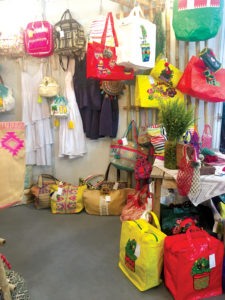
Some 333 new exhibitors have joined the fair this year. One of them is Anil Bisht from Mana near Badrinath, the last border village of Indian territory at the Indo-China border. A simple man, he is here with his family, children and other craftsmen from his village. They are very excited as he has received a lot of queries and orders for their handmade sheep wool products from international buyers on the first day itself.
“I am thinking about how we are going to produce it the quantities they have given us. It is a small number for them, as they want to check the quality but for us, it is a big number as we have mostly only produced for our local people back in the village”, relates Bisht.
To see communities from the grassroots being given the opportunity to put their product on a platform like this is a huge success in itself. “Praveen Reddy who is from the Indian army and Dr Krishna Gopal from RSS came to visit us while they were travelling in the region. They did it all for us and furthered our cause as we were not making any money out of this,” recalls Bisht. Their stall is sponsored by the Ministry of Textiles that helped them put in touch with the team at EPCH who further their product in terms of design.
Anil, a designer from EPCH worked with these Mana-based craftsmen on a few products. Apart from their usual handmade Pattus, quilts, sweaters, they have woollen ponchos that were further block printed in Barmer in Rajasthan to add an element of design. “Now the team in Barmer will visit the craftsmen in Mana and train them to do block printing themselves. It is a part of the skill development product by the government. We are also doing a fashion show here”, adds Anil.
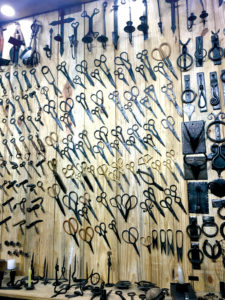
With products and crafts from various regions in India, what caught our eye was the metalware from Moradabad for its versatility, apart from it being an industry that is earmarked by EPCH as needing attention to meet export goals.
Fahim of Chaman India Handicrafts is representing Moradabad here and his collection of handmade scissors is a delight for anyone who has a thing for the tool. His organisation that got registered in 2002 has been showcasing here since 2015 and he confirms a significant growth in sales from before. But according to him, sales have been down due to GST and the 10-20% drawback he used to receive from the government on the purchase of brass. His stall has other metalware on display like nails, hooks, garden and bathroom accessories that he says are a hit in the US, Japan, France and the Netherlands, which are his major markets. On being asked whether he is persuading retailers in India to pick his product, he laughs at the idea.
“Handmade is not exactly appreciated in India. These scissors are specially hand-moulded and are not dye made. It is an entirely different process. A person in India would rather go for a cheaper version of a pair of scissors”, tells Fahim.


